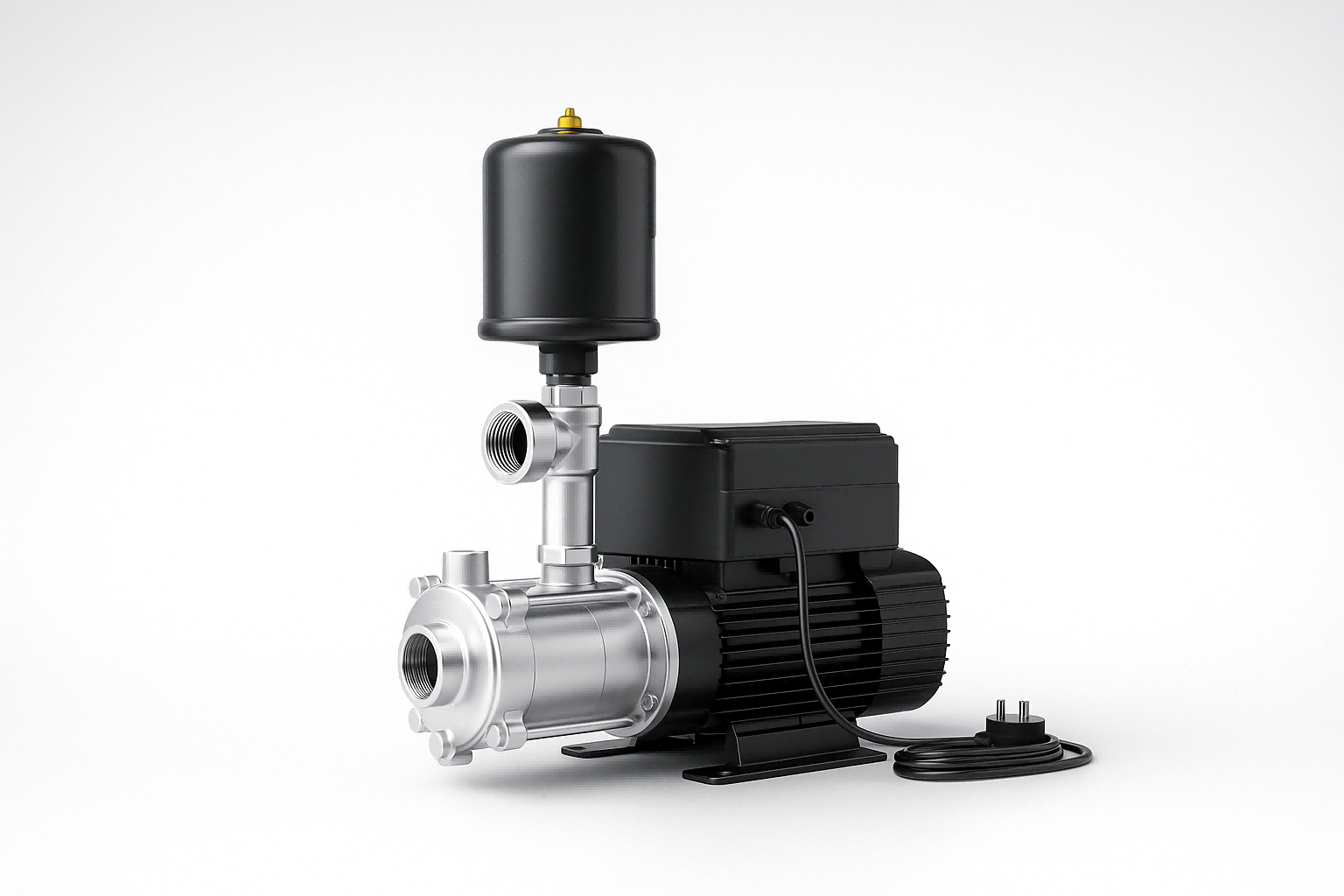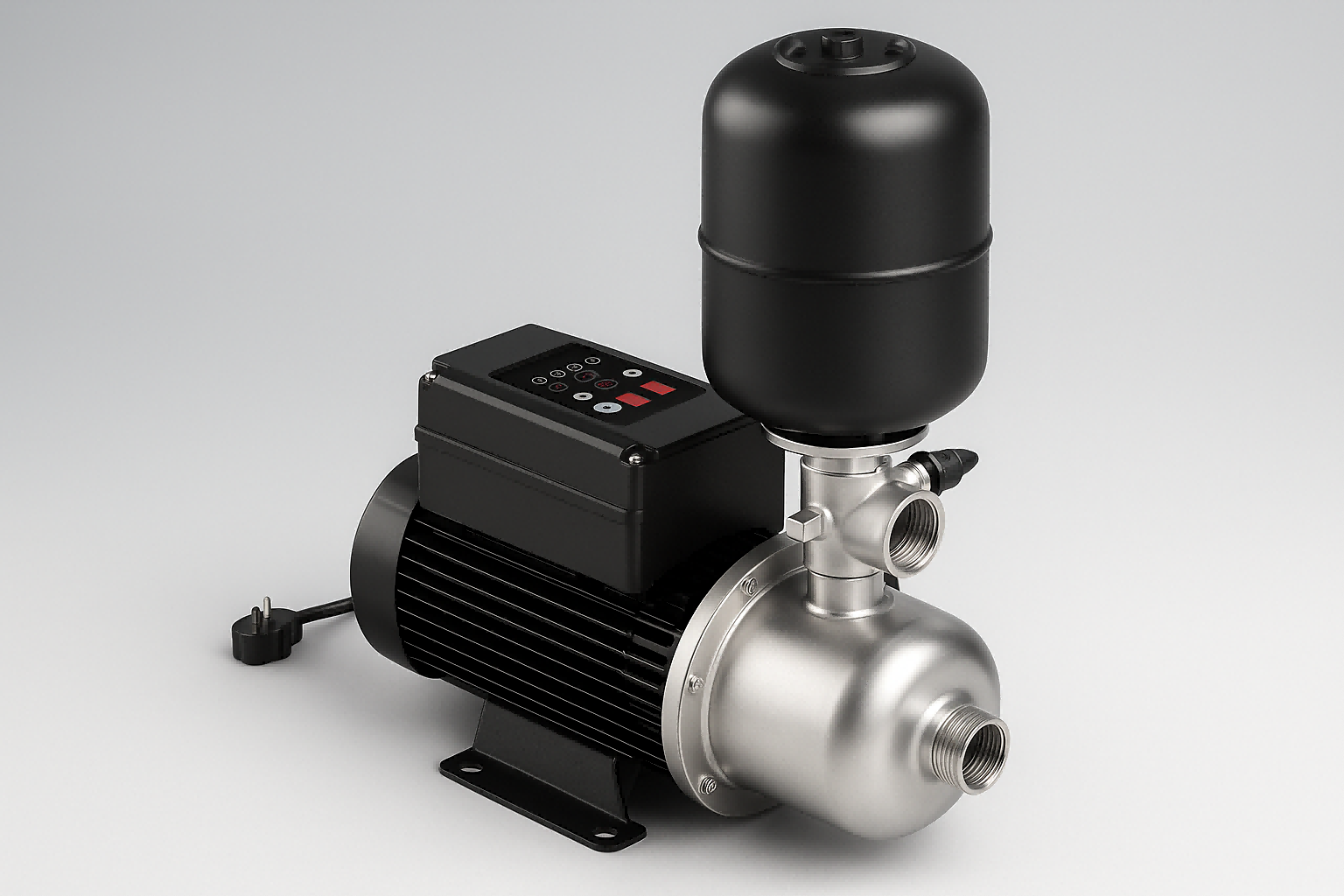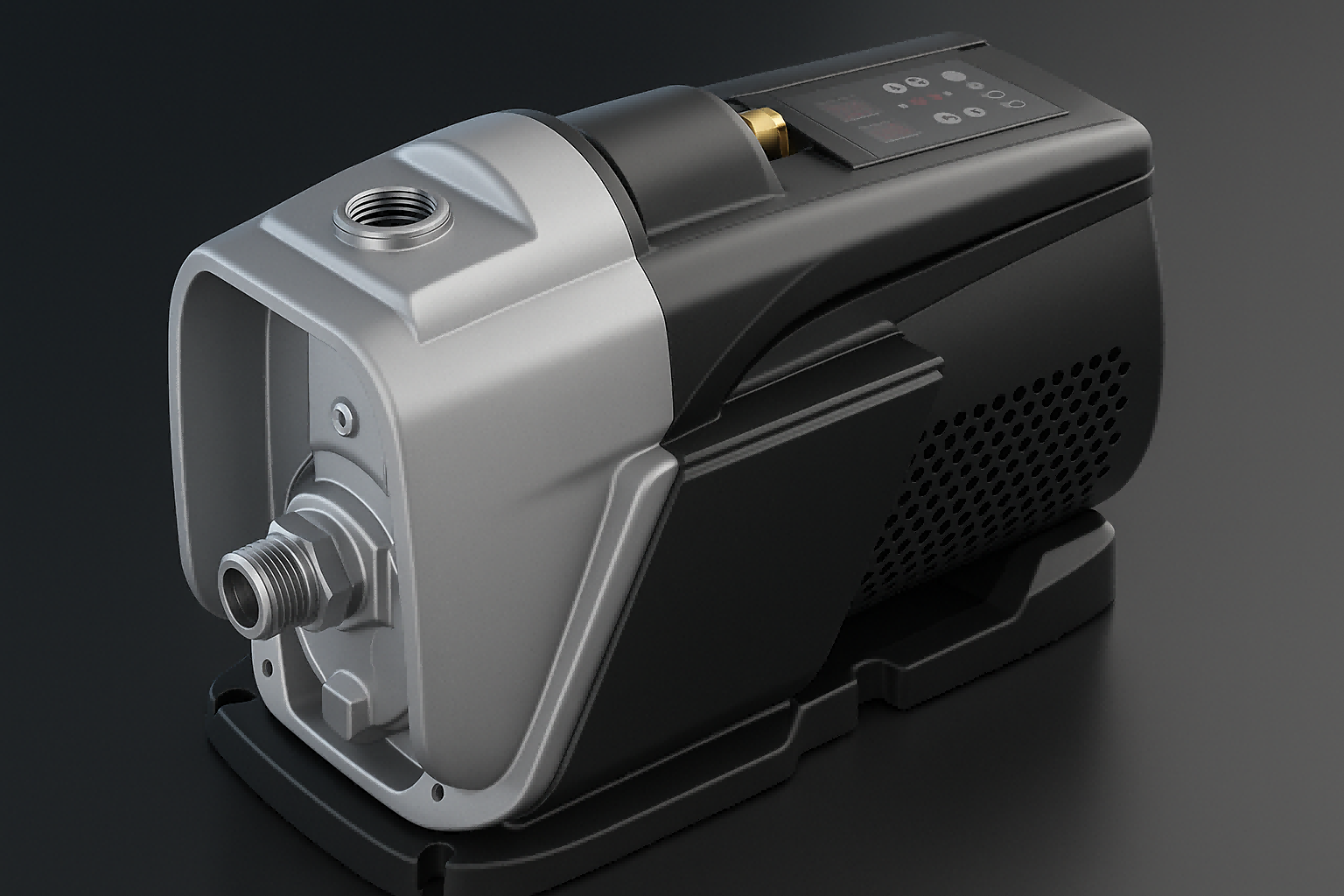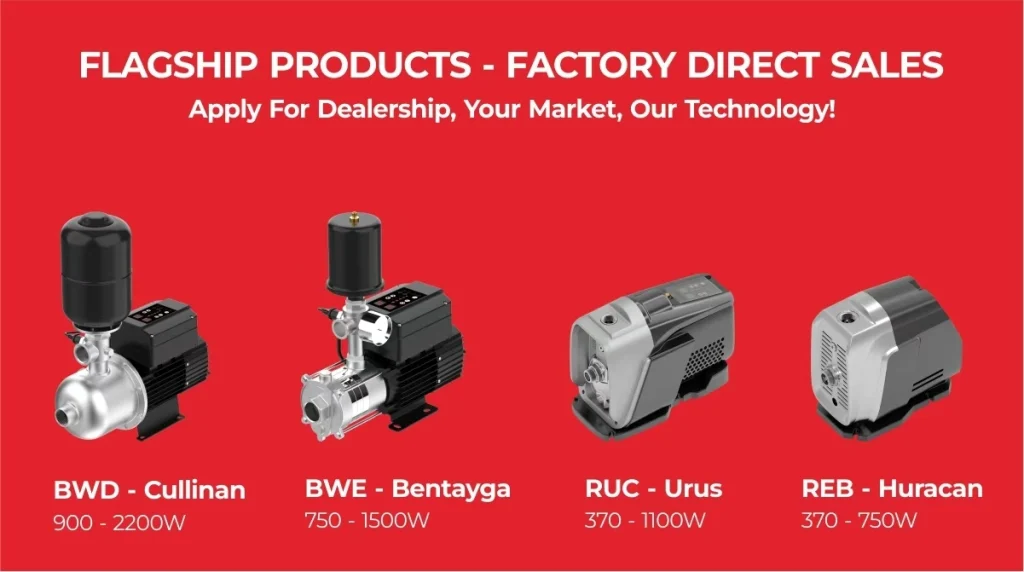Are you tired of weak showers and slow-filling appliances?
Low water pressure can make simple daily tasks frustrating.
A pressure booster pump offers a permanent, powerful solution.
Yes, a pressure pump is an excellent addition to a home suffering from low or inconsistent water pressure.
It ensures a strong, steady flow to all taps, showers, and appliances.
This improves daily convenience, protects your plumbing, and enhances the performance of your water-dependent machines.
Choosing the right pump might seem complex, but it's a decision that can dramatically improve your quality of life.
Understanding the core benefits and key features is the first step toward solving your water pressure problems for good.
Let's explore what makes these devices so valuable and how to select the perfect one for your needs.
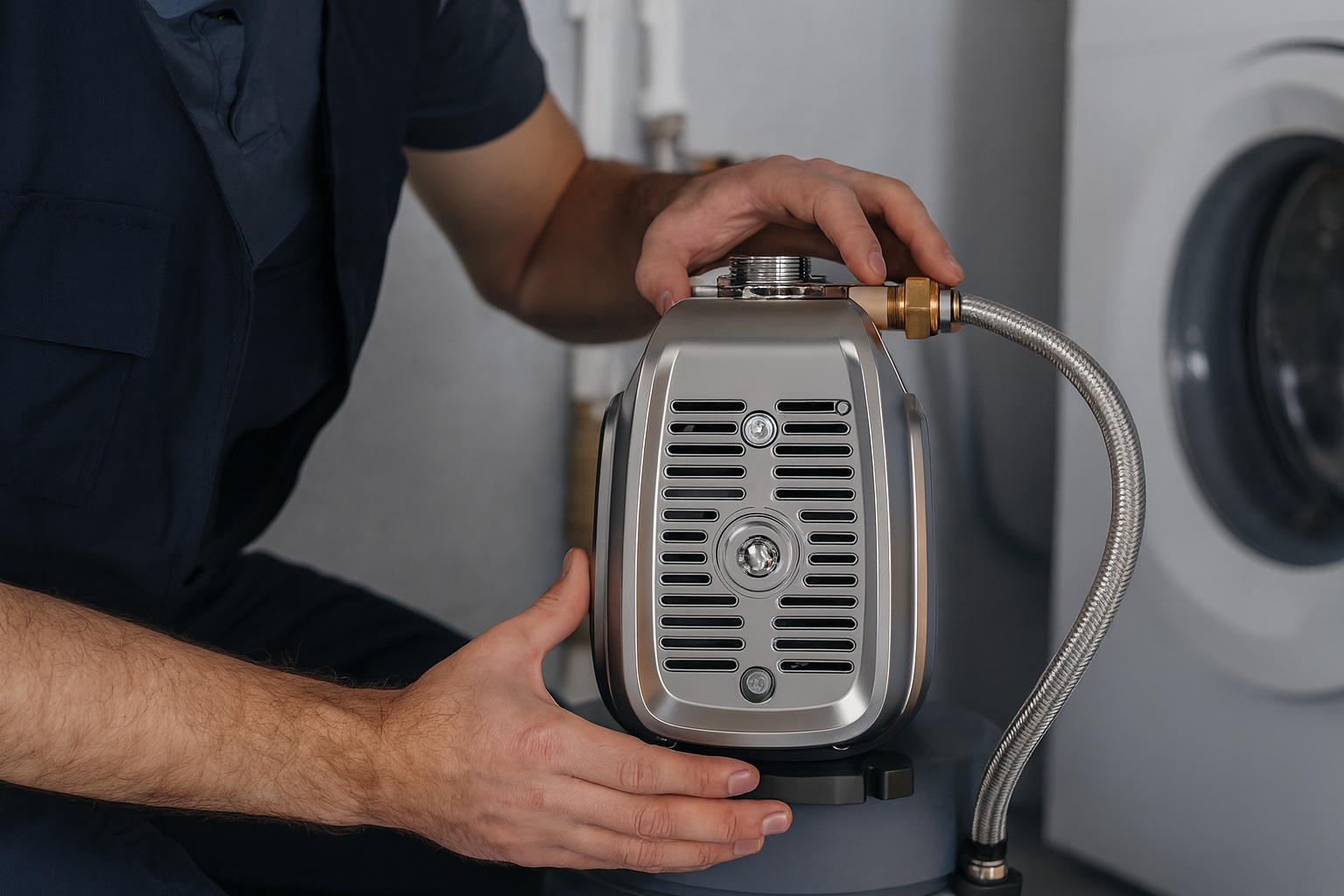
What are the top benefits of a water pressure pump?
Do you find yourself waiting forever for the bathtub to fill?
This daily annoyance is a common sign of inadequate water pressure.
A booster pump eliminates this wait and brings numerous other advantages.
A water pressure pump delivers consistent, powerful water flow throughout your home.
This means invigorating showers, faster-filling washing machines, and the ability to use multiple taps at once without a drop in pressure.
It transforms your home's water system from a source of frustration to one of reliability.
The advantages of a reliable water supply extend far beyond a better shower experience.
They touch on nearly every aspect of your daily water usage, from appliance longevity to energy efficiency and even the peace and quiet of your home.
A well-chosen pump is an investment in comfort, productivity, and the health of your home's plumbing infrastructure.
It ensures that your water system works for you, not against you.
Better Performance and Longevity of Appliances
Many modern household appliances require a minimum water pressure to operate correctly.
Dishwashers, washing machines, and tankless water heaters are all designed to function within a specific pressure range.
When pressure is too low, these machines struggle.
Washing cycles take longer, cleaning is less effective, and internal components are put under undue strain.
A booster pump guarantees that your appliances receive the steady water supply they need to perform at their best.
This not only ensures they do their job effectively but can also extend their operational lifespan by preventing the wear and tear associated with inadequate flow.
Significant Power and Water Savings
It may seem counterintuitive that adding an electric pump can save power, but it's true.
Consider a washing machine that takes 30% longer to fill due to low pressure.
During that extra time, its electronic components are powered on and consuming electricity.
By ensuring the machine fills quickly, a booster pump reduces the total cycle time, thereby cutting down on passive energy consumption.
Furthermore, with strong, consistent pressure, tasks like rinsing dishes or washing a car are completed faster and with less water.
This efficiency directly translates into lower utility bills over the long term.
A Quieter, Healthier Plumbing System
Inconsistent water pressure can lead to a phenomenon known as "water hammer."
This occurs when flowing water suddenly stops or changes direction, creating a shockwave that results in loud banging or knocking sounds in your pipes.
These pressure surges are not just noisy; they can damage joints, fittings, and fixtures over time.
A modern pressure pump, especially one with soft-start and soft-stop features, eliminates these abrupt pressure changes.
It provides a smooth, controlled flow that significantly reduces stress on your entire plumbing system, preventing costly leaks and preserving its integrity.
Everyday Reliability and Convenience
The ultimate benefit is the simple luxury of a water system you can depend on.
Watering the garden becomes a quick task, not a slow trickle.
You can run the dishwasher while someone takes a shower without worrying about the water turning cold or weak.
Everyday tasks that rely on water, from cooking and cleaning to personal hygiene, become seamless and efficient.
This level of reliability removes a common source of daily frustration and allows you to use your time more productively.
The peace of mind that comes from knowing your water will always be there when you need it, at the pressure you expect, cannot be overstated.
How do you choose the right water booster pump?
Choosing a pump feels overwhelming with so many technical options available.
You worry about buying a pump that is too weak, too noisy, or unreliable.
Making an informed choice ensures you get a lasting solution, not another problem.
To choose the right booster pump, you must assess your home's flow rate needs, required pressure, and the pump's core technology.
Look for energy-efficient models with robust safety features and durable materials.
Prioritizing a quiet, intelligent, and well-supported pump will provide the best long-term value.
Selecting the ideal pump involves more than just matching numbers on a chart.
It requires a deeper look into the engineering and design that separate a basic model from a high-performance, intelligent system.
Key factors like motor technology, electronic protection, and material quality are critical.
These elements determine not only the pump's immediate performance but also its efficiency, noise level, and lifespan.
Understanding these technical aspects will empower you to invest in a solution that delivers consistent pressure quietly and reliably for years to come.
Core Technology: The Engine of Your Pump
The heart of a modern booster pump is its motor and control system.
Traditional pumps run at a single, constant speed, which is inefficient and loud.
Advanced systems utilize a different approach.
- Variable Frequency Drive (VFD): This intelligent controller acts as the pump's brain. It adjusts the motor's speed in real-time based on water demand. When you open a single tap, the motor runs slowly. When you open multiple taps, it speeds up. This ensures you always get constant pressure while using the minimum amount of electricity necessary.
- Permanent Magnet Synchronous Motor (PMSM): Paired with a VFD, this motor technology is far more efficient and quieter than older induction motors. The use of powerful permanent magnets reduces energy loss, allowing for higher speeds and greater power from a more compact and durable design.
A system combining these two technologies will deliver stable pressure, ultra-quiet operation (often below 50dB), and significant energy savings.
Durability and Material Quality
A pump is constantly in contact with water and subject to electrical and thermal stress.
Therefore, its construction materials and protective features are paramount for a long service life.
| Component | Recommended Material | Benefit |
|---|---|---|
| Pump Housing | UV-Resistant ABS | Prevents cracking and degradation from sun exposure if installed outdoors. |
| Impellers | AISI 304 Stainless Steel | Offers superior resistance to corrosion and wear, ensuring hydraulic efficiency. |
| Bearings | High-Precision (e.g., NSK) | Results in quieter operation, lower vibration, and a significantly longer lifespan. |
| Electronics | Potted/Sealed PCB | A fully sealed circuit board (IP67) is impervious to moisture, preventing a common cause of failure. |
Investing in a pump built with premium materials ensures it can withstand challenging operating conditions, from fluctuating voltage to high ambient temperatures, providing years of trouble-free service.
Intelligent Protection and Safety Features
The most reliable pumps are those that can protect themselves from common operational hazards.
A comprehensive suite of built-in safety functions is a hallmark of a high-quality design.
Look for a system that includes protections against:
- Dry Run: Prevents the pump from destroying itself if the water source runs out.
- Overheating: Monitors both motor and water temperature to shut down before damage occurs.
- Voltage Fluctuations: Operates reliably across a wide voltage range (e.g., 165V-260V) and protects against under/over-voltage events.
- Frost: Automatically runs the pump for short periods in freezing conditions to prevent ice damage.
- Leak Detection: Alerts you to potential leaks in your plumbing, saving water and preventing damage.
These intelligent features provide complete peace of mind, safeguarding your investment and your home.
Do pressure pumps use a lot of electricity?
Many homeowners worry that installing a pressure pump will cause their electricity bill to skyrocket.
This concern is valid, especially with the rising cost of energy.
However, avoiding a solution due to perceived high running costs might be a mistake.
No, modern pressure pumps do not use a lot of electricity, thanks to intelligent technology.
Pumps with Variable Frequency Drives (VFD) only use the exact amount of power needed to meet your home's water demand, potentially reducing energy consumption by up to 50% compared to older pumps.
The difference in energy consumption between a traditional, fixed-speed pump and a modern VFD pump is substantial.
A fixed-speed pump always runs at 100% power, whether you're using a single small tap or multiple showers.
This is incredibly wasteful.
A VFD pump, in contrast, is a smart system.
It precisely matches its energy use to the task at hand, ensuring powerful performance is always available without the associated waste.
Let's break down how this technology achieves such remarkable efficiency.
Understanding Variable Frequency Drive (VFD) Technology
A VFD controller is the core of an energy-efficient pump.
It functions by taking the standard electrical supply and converting it to a variable frequency and voltage output.
This allows it to control the motor's speed with incredible precision.
Here’s how that translates to savings:
- Demand-Based Speed Control: The system continuously monitors water pressure. When you open a faucet, the pressure drops slightly. The VFD detects this and tells the motor to spin just fast enough to restore the pressure to the setpoint.
- Soft Start and Stop: Instead of jolting to full speed instantly, a VFD pump gradually ramps up and down. This "soft start" avoids the huge inrush of current that traditional motors draw upon startup, which is a major point of energy consumption.
- Optimized Motor Performance: VFDs work best with highly efficient motors like Permanent Magnet Synchronous Motors (PMSM). This combination ensures that very little energy is lost as heat, and almost all of it is converted into useful pumping power.
Real-World Energy Consumption
Consider a typical household's water usage.
Much of the time, the demand is low—running a kitchen sink, flushing a toilet, or using a bathroom faucet.
Only occasionally is there a high demand, like when running multiple showers and an appliance simultaneously.
| Water Usage Scenario | Fixed-Speed Pump Power Usage | VFD Pump Power Usage |
|---|---|---|
| One Kitchen Faucet | 100% | ~20% |
| One Shower | 100% | ~40% |
| Two Showers + Washing Machine | 100% | ~90% |
| Standby (No Flow) | 0% | 0% (Minimal for controller) |
As the table shows, a fixed-speed pump wastes a significant amount of energy during low-demand periods.
A VFD pump, however, scales its consumption intelligently.
Over the course of a day, this results in dramatic electricity savings.
An investment in a VFD pump is not just an investment in better water pressure; it is an investment in lower long-term operating costs for your home.
The energy savings can often pay for the initial difference in cost between a basic and an intelligent pump over its lifespan.
Conclusion
A high-quality pressure pump is an excellent investment for any home with water pressure issues.
It enhances daily life, protects appliances, and with modern technology, operates with remarkable energy efficiency.
FAQs
1. What is the ideal water pressure for a house?
The ideal residential water pressure is typically between 40-60 PSI (2.76-4.14 Bar).
This range ensures strong flow without stressing your plumbing and fixtures.
2. How long do water booster pumps last?
A well-maintained, high-quality booster pump can last for many years.
Pumps with durable materials like stainless steel and advanced electronic protections often have a longer lifespan.
3. Where should a water pressure booster pump be installed?
The pump is typically installed on the main water line after the meter and before the water splits to different parts of the house, often in a utility room or basement.
4. Can a booster pump be too powerful?
Yes, excessive pressure can damage pipes, joints, and appliances.
Choose a pump with adjustable pressure settings to match your home's needs and avoid creating water hammer.
5. Do I need a pressure tank with a booster pump?
Modern VFD booster pumps often include a small, integrated pressure tank.
This tank helps reduce pump cycling for small uses and absorbs pressure shocks, extending the pump's life.
6. Will a booster pump work if I have a water softener?
Yes, a booster pump can be installed before or after a water softener.
Installing it before can help maintain consistent pressure through the softening system.
7. Can a pressure pump fix a leak?
No, a pressure pump will not fix a leak.
In fact, the increased pressure might make an existing small leak more noticeable.
Some intelligent pumps have leak detection warnings.
8. Is a professional plumber needed to install a booster pump?
While some DIY-savvy homeowners may install a pump, professional installation is highly recommended.
A plumber ensures proper integration with your plumbing and compliance with local codes.



